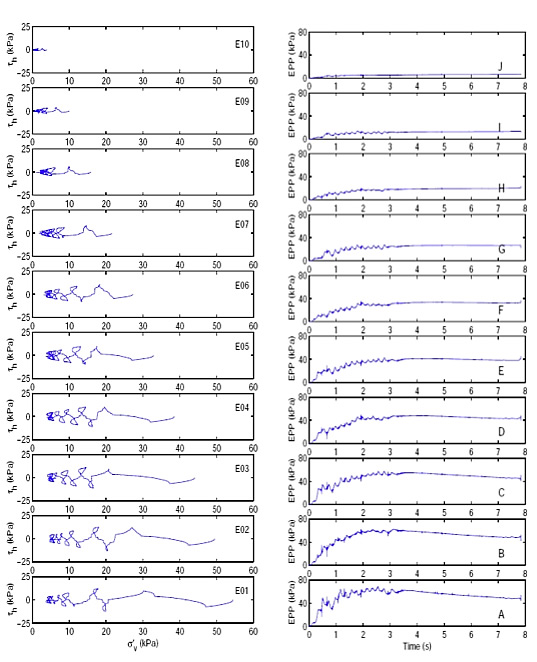Geomechanics Simulations Tools for PBEE - 4262005
| Project Title—ID Number | Geomechanics Simulations Tools for PBEE - 4262005 |
| Start/End Dates | 10/1/05 – 9/30/06 |
| Funding Source | PEER-CA State Transp. Fund |
| Project Leader (boldface) and Other Team Members | Boris Jeremic (UCD/F), Zhao Cheng (UCD/GS), Ian Tucker (UCD/US) |
Project goals and objectives
The main goal if this project is to provide a number of simulations tools for use in Performance Based Earthquake Engineering. Of particular interest are tools for modeling and simulations of soil-foundation-structure interaction (SFSI). Among the developed tools so far are the ones used for:
- - Elastic plastic modeling of soils (through template elastic plastic methodology)
- - Seismic motions input (through the domain reduction method)
- - Parallel computational methodology for large scale geotechnical and structural models
- - Fully coupled (porous solid – fluid) methodology for modeling of saturated soils, cyclic mobility and liquefaction.
Current project is focusing on issues related to SFSI in saturated soils.
Role of this project in supporting PEER's mission (vision)
This project supports PEER's mission by providing verified and validated simulation tools that can be used for detailed, high fidelity simulations of behavior of constructed facilities during earthquakes.
Methodology employed
Methodology employed for this particular focus area (behavior of fully coupled soils in SFSI problems) is based on u-p-U formulation that uses displacements of solid phase (u), pore fluid pressures (p) and displacements of fluid phase (U) as main unknowns. This approach allows for simulations of a very general set of coupled problems as found in SFSI modeling.
Brief Description of previous year's achievements, with emphasis on accomplishments during last year (Year 8)
During the previous year we have successfully verified our implementation on a number of developed closed form solutions. We have also started the implementation of the latest version of Dafalias Manzari material model that is currently used for validation study. For example, figures below show stresses and pore water pressures for a vertical soil profile, make of liquefiable Toyura sand, with a seismic wave propagating vertically. The results are plotted at each meter, and it is obvious that the top three layers experience cyclic mobility, which becomes liquefaction for top two layers.

Other similar work being conducted within and outside PEER and how this project differs
Similar work has been done by the UCSD group, which has developed the u-p formulation for saturated soils. Our formulation and implementation is different in that it is more general, and allows us to simulate problems where the acceleration of pore fluid plays a role in response. This is the case, for example, in analyzing SFSI where stiff piles interact with soft (liquefied) soils and pore fluid is experiencing significant accelerations.
Describe any instances where you are aware that your results have been used in industry
We are aware of Caltrans engineers inquiring about (and possibly using) our developments. In addition to that, we are also aware that some companies (like Earth Mechanics) are showing interest and might be using (or are getting ready) to use our developments.
Expected milestones & deliverables
We expect to have a fully validated set of models by late this summer. In parallel, we are developing models for SFSI in liquefied soils that we will be analyzing this coming fall and winter.
Back to Funded Project Archive main page

